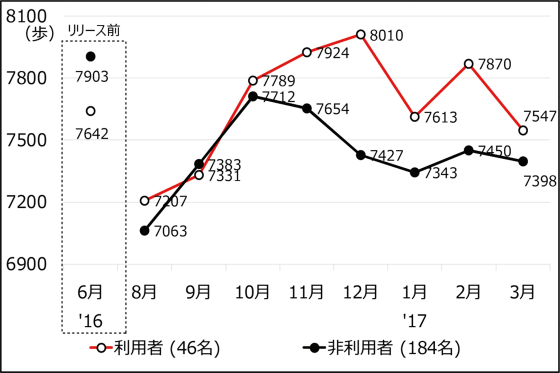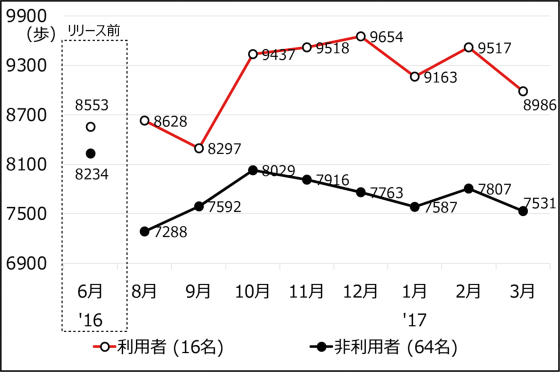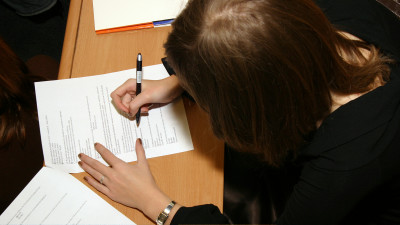Researchers from the University of Tokyo indicate that Pokemon GO is useful for increasing the number of steps for middle-aged and elderly people

by David Grandmougin
"Pokemon GO" became a hot topic because the total walking distance of the player exceeds 8.7 billion km (200,000 laps of the earth) in less than half a year from the release, but it is obvious in middle-aged players before and after Pokemon GO release The number of steps per day has increased by research conducted by researchers at the University of Tokyo.
JMIR - Step Counts of Middle - Aged and Elderly Adults for 10 Months Before and After the Release of Pokémon GO in Yokohama, Japan | Hino | Journal of Medical Internet Research
https://www.jmir.org/2019/2/e10724/
Walking with Pokémon | The University of Tokyo
https://www.u-tokyo.ac.jp/focus/en/press/z0508_00028.html
The number of steps of middle-aged and older age using location information game increased significantly - From the number of steps analysis for 9 months before and after "Pokemon GO" release -
(PDF file) https://www.tu-tokyo.ac.jp/shared/press/data/setnws_201902071740340422825960_437207.pdf
Research on the relationship between Pokemon GO and the number of steps in middle age and older students and published research papers is based on the associate professor Kunihiro Hino and Department of Urban Engineering majoring in the University of Tokyo graduate school and Professor Yasushi Asami and the University of Tokyo graduate school of medicine public health It is three members of Associate Professor Lee Jang-hye of the academic classroom. In the survey we are investigating the average number of pedometers per day for middle-aged and elderly people before and after the Pokemon GO release in July 2016.

Among the participants of " Yokohama Walking Point " conducted by Yokohama City, the subjects to be analyzed were over 40 years old as of the survey conducted in March 2017, and answered to the participant questionnaire survey sent randomly From the people who gave me the position information game users and non-users are selected so that "gender, age, advance number of steps" is equal. The analysis target is 46 people (average age 56.6 years old) users of location information games, 184 people (average age 57.3 years old) non-users.
In the analysis, the method " repeating two-way analysis of variance " is used, and it analyzes whether there is a significant difference between the two groups in 9 months before and after Pokemon GO release. Analysis revealed that statistically significant differences were found in the change in the average step count in three months (November, December, February) after the release compared to before release. In other words, users of location information games know that they are walking better than non-users.
The graph below shows the average number of steps per day for the users of the position information game and non-users on a monthly basis. In the stage before the release of Pokemon GO, the average number of steps per day for position information game users was 7642 steps, and the users were 7903 steps. After release, it is almost the same level until October, but there is a statistically significant difference in November, December, February, and the average number of steps per day is the use of location information games in all months since October Those are outnumbering.

As you can see from the graph, before the release of Pokemon GO, the non-user group of position information games was 261 steps a day as the number of steps a day, but the non-user group is the winter time to reduce the number of steps Even in the position information game user group, the number of steps is maintained, and in December the average number of steps per day is 583 steps.
In addition, it is classified by gender / age (55 years old, 55-64 years old, 65 years old or over), occupation (occupation, unemployed), advance step number (high, low), subjective sense of health (high, low) Similarly, when comparing the number of steps with users / non-users of location information games, the significant differences were seen in the multiple months are "male", "55 to 64 years old", "occupant", " It is said that it was a group with a high standard "and" a group with a high sense of subjective health. " In particular, at "55 to 64 years old", significant differences are seen in 7 months except September, and it is clear that the position information game user group often walks.
The graph below shows the average number of steps per day for the users of the position information game and non-users in the 55-64 year old group on a monthly basis.

The paper says, "It is clear that location information games are useful for promoting the amount of physical activity of middle-aged and elderly people. The findings obtained in this research are based on the development of new games and the health promotion policies of local governments It is expected to be useful for planning. "
Related Posts:







